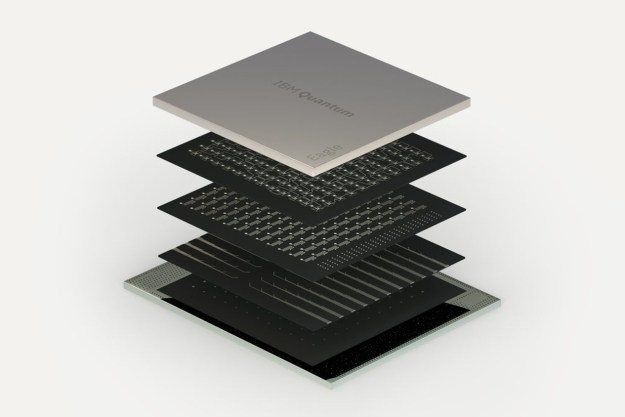Could quantum computing help feed the hungry? That’s one possible way that it will transform the world around us, University of Chicago computer science professor Fred Chong told Digital Trends. According to Chong, in the long-term quantum computers could employ special quantum chemistry algorithms to better understand and improve nitrogen fixation, thereby leading to more energy-efficient production of fertilizers and greater food production.
While that’s still a way off, Chong has reason to be optimistic: his department at the University of Chicago is among seven universities selected to receive a total of $15 million in funding from the National Science Foundation, with the goal of developing the world’s first practical quantum computer over the next five years. They are employing a different approach, based around trapped ions, to the quantum computers developed by companies such as Google. The funding could help make quantum computers that can attack real-world problems.
“Quantum computers have recently been growing in size, but they are still too small to solve practical problems,” Chong said. “This award will allow us to develop better quantum hardware, but also software that is tailored to that hardware. By developing software that adapts to the physics of a specific machine, we expect to solve problems using machines that are up to 1,000 times smaller than with conventional software. One-thousand times smaller means we will be able solve practical problems in five years instead of waiting 25 years for machines to get large enough.”
In terms of what is meant by “practical quantum computing,” Chong said that he hopes to create quantum technology capable of solving a real-world problem faster or nearly as fast as the fastest conventional supercomputer. “We want to demonstrate that even small quantum computers can be competitive with our best conventional technology, and to motivate further development of even larger quantum machines,” he continued.
In the short term, Chong said that he hopes it will be possible to use small quantum computers to model simpler molecules better than conventional supercomputers are able to. Along with the possibility of helping alleviate world hunger, other practical applications of this could include developing far more efficient solar cells.
As well as the University of Chicago, other universities benefitting from this project will include Duke University (project lead), University of Maryland, Tufts University, MIT, University of California, Berkeley, and the University of New Mexico.
Editors' Recommendations
- The world’s first 8K mini-LED monitor has arrived
- This $30,000 computer’s source code has just been released for free
- Scientists just achieved a breakthrough in quantum computing
- Intel launches the world’s first 16-core mobile CPU
- Inside the U.K. lab that connects brains to quantum computers


